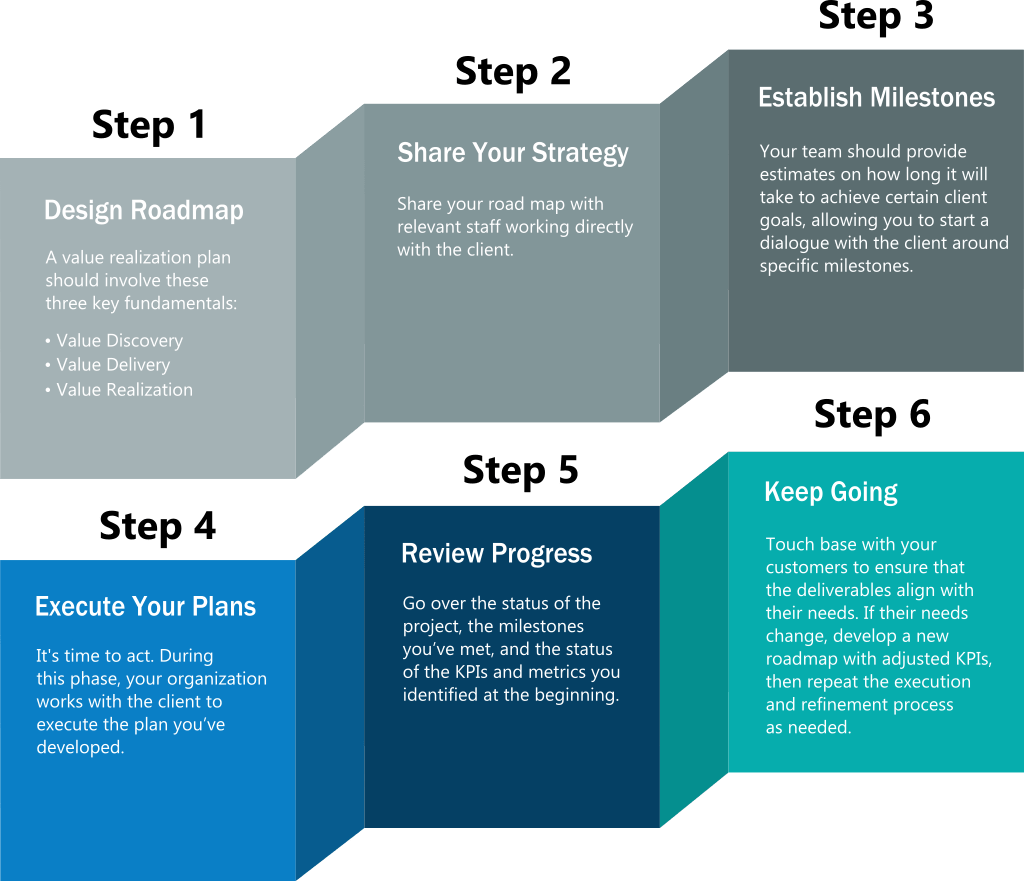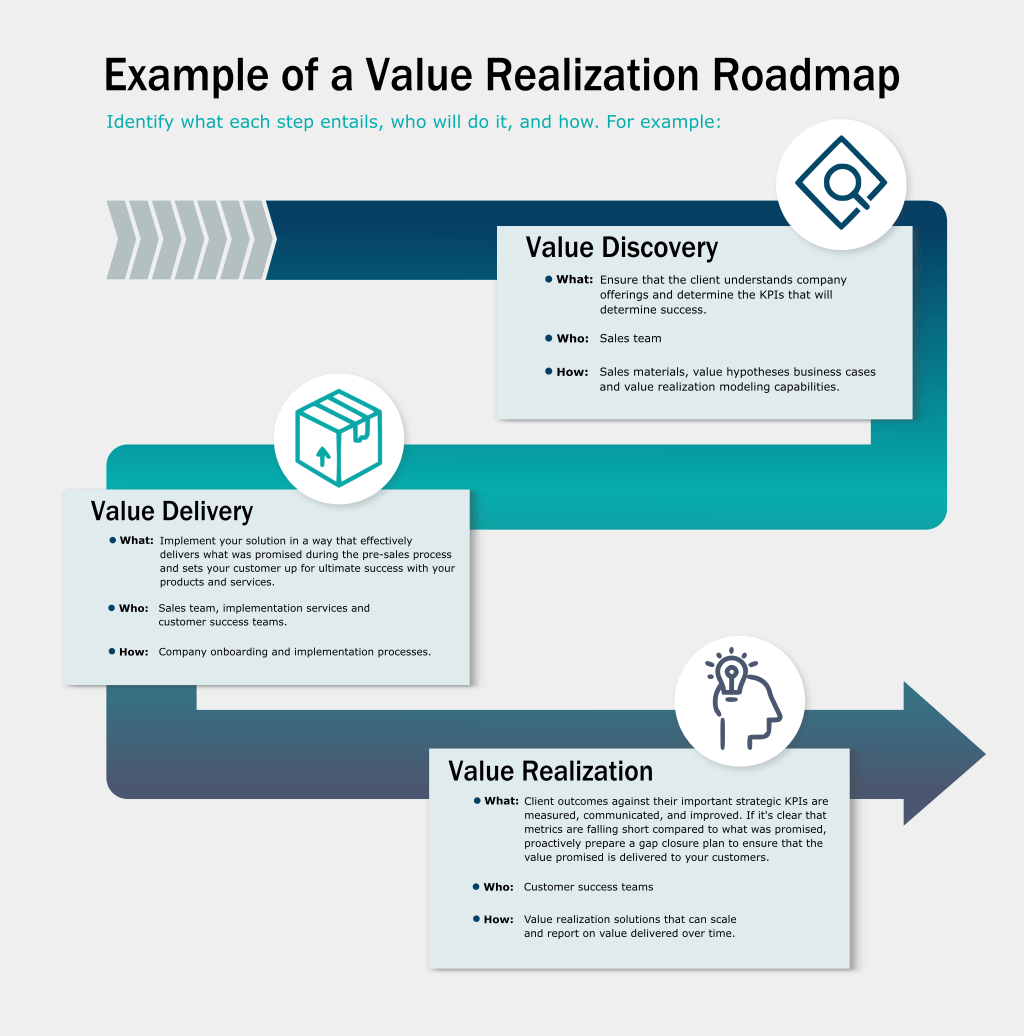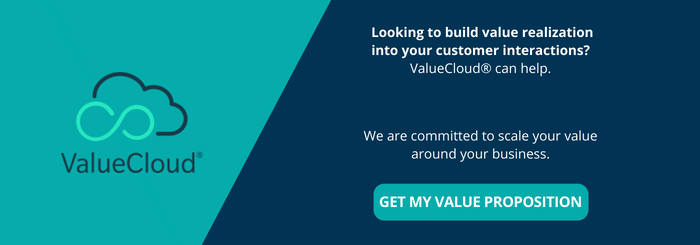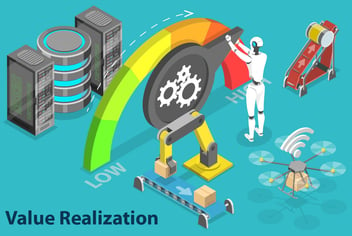Developing an Effective Value Realization Strategy

Your customers are your biggest asset, and one of your top priorities should be retention. It can cost up to five times more to bring in new customers than it takes to retain them, which is why value realization is such an important tool for companies to be leveraging in their customer success strategies.
Value realization is the process of communicating the true value your offering provides to your customers. If a client doesn’t recognize the value you’re providing, it increases the likelihood that they will churn. In this article, you’ll learn the benefits of value realization for your business and the steps to develop a value realization strategy.
The Advantages of Value Realization
Value realization has four major benefits for your business.
- Customers can discover quantified, economic value they didn’t previously recognize in your offerings
- You can gain a better understanding of your clients’ needs by asking them about their strategic goals and initiatives, and make sure you’re delivering against those KPIs
- You can proactively prevent churn by addressing problems, uncovering gaps in value promised vs. value achieved and improving satisfaction
- You can reduce customer acquisition costs and increase profits by retaining and expanding customers more effectively
To accomplish this, you need an effective value realization strategy. This strategy, or roadmap, will guide you through the process of learning what your customers value, understanding how to measure that value, and demonstrating it to clients.
Steps to Creating a Value Realization Strategy

1. Design Roadmap (with KPIs and Metrics in mind)
The first step to creating your strategy is to design a roadmap. Any value realization plan should involve the following three fundamentals:
- Value Discovery: Working with the client to uncover the value they want to receive from your offering and determining how they measure success. In this step, you should identify the metrics and KPIs you’ll use to monitor the value you provide.
- Value Delivery: Providing the solutions the client wants and helping them implement your offering effectively in order to achieve their desired outcomes. During this stage, you make sure that you’re monitoring the metrics and meet the KPIs you’ve set.
- Value Realization: The ongoing process of communicating to the client the value you’ve helped them to realize by your mutual partnership.. In this stage, you’re providing quantified economic value metrics that prove your product has helped them to achieve the goals and KPIs established in the Value Discovery phase.
Ideally, the value discovery phase takes place during the sales process. Value delivery begins with client onboarding and continues through the client lifecycle. Finally, value realization can take place once the initial KPIs are met and can be managed with both customer success teams, as well as executive sponsors on both sides of the partnership.
2. Share Your Strategy
Once you’ve created a roadmap, it’s time to share it with all relevant stakeholders, like your key staff working with and supporting the client.
It’s critical that your customer success teams understand the value realization roadmap and how it is a strategic initiative for your business’ growth. Every client may have slightly different definitions of success, so by explaining the strategy and KPIs to your team, they are better able to meet the client’s expectations.
3. Establish Milestones
Internal stakeholders play a role in establishing milestones, too. Your team can provide estimates on how long it will take to achieve certain client goals, allowing you to start a dialogue with the client about specific milestones.
These milestones are a refinement of the overall strategy. If the value realization roadmap is a collection of destinations, the milestones are pit-stops along the way. While the end-goal is to successfully implement your product or offering, your milestones might be things like onboarding the client’s team, implementing the test phase of the project, and going fully live.
Milestones should include dates and quantifiable KPIs that can be met. These elements will help your team and your client confirm that the project is still on track and on time.
4. Execute Your Plans
You can only plan for so long. Once you’ve set milestones and confirmed them with the client, it’s time to act. During this phase, your organization works with the client to execute the plan you’ve developed.
Even the best laid plans can run into complications. If any surprises pop up during execution, talk to the client immediately to resolve the situation. Proactive responses can help your company refine the roadmap to reflect the actual conditions of the project, or adjust it to your client’s preferences before complications affect the value you provide. By discussing problems as they arise, not only do you gain the trust of your customer, you also increase customer satisfaction and maintain your ability to deliver the value your customer is expecting.
5. Review Progress
Both before and after the project is complete or the deliverable has been provided, review progress with your client. Go over the status of the project, the milestones you’ve met, and the status of the KPIs and metrics you identified at the beginning.
With a regular cadence, like a Quarterly Value Review (QVR), you establish a regular touchpoint with your customers focused solely around value realization. Executive sponsors from both your company and your customer should be present, as these meetings will revolve around the KPIs that they are responsible for.
Using a value management tracker in these meetings can help you demonstrate the benefits you’ve already provided. You can prove your impact throughout the execution of your offering, so your clients never doubt the value you deliver.
6. Keep Going (Wash, Rinse, Repeat)
The true worth of value realization is its ability to help you build trust with your customers, making sure your customers are loyal advocates for your brand and growing your net retention rates in return. It’s much easier to continuously prove the value you provide to present clients than it is to acquire new ones.
To repeat the cycle,make sure that value realization is a key strategic initiative within your organization. Regularly touch base with your customers, both day to day users and executive sponsors, to ensure that you’re operating under the same understanding of what constitutes success and have clear and open conversations around where you stand relative to what was promised and what has been delivered. If your clients’ needs change, develop a new roadmap with adjusted KPIs, then repeat the refinement and execution process.
Example of a Value Realization Strategy and Roadmap
Your value realization strategy should be specific and actionable. That means that you should identify what each step entails, who will do it, and how.

For example, a value realization roadmap for your strategy may look like this:
Step one: Value Discovery
- What: Ensure that the client understands company offerings and determine the KPIs that will determine success
- Who: Sales team
- How: Sales materials, value hypotheses, business cases and value realization modeling capabilities
Step two: Value Delivery
- What: Implement your solution in a way that effectively delivers what was promised during the pre-sales process and sets your customer up for ultimate success with your products and services
- Who: Sales team, implementation services and customer success teams
- How: Company onboarding and implementation processes
Step three: Value Realization
- What: Client outcomes against their important strategic KPIs are measured, communicated, and improved. If it’s clear that metrics are falling short compared to what was promised, proactively prepare a gap closure plan to ensure that the value promised is delivered to your customers.
- Who: Customer success teams
- How: Value realization solutions that can scale and report on value delivered over time
Get Started
ValueCloud® has all the tools you need to identify, quantify and communicate the value your solutions have delivered to your customers.
Get started right away and discover how proving your worth can increase profitability, reduce customer acquisition costs, improve customer The best way to retain your current customers is to get started on your value realization strategy today. If you’re ready to demonstrate value to your customers, DecisionLink can help improve customer satisfaction and drive net retention rates.
Or, to learn more on the subject, download the whitepaper “The Roadmap to Value Maturity.”

 ValueCloud
ValueCloud
.png?width=118&height=76&name=Rectangle%20(3).png) ValueCloud Ignite
ValueCloud Ignite
.png?width=92&height=92&name=Rectangle%20(4).png) Free Assessment
Free Assessment
.png?width=100&height=100&name=Rectangle%20(5).png) Watch a Demo
Watch a Demo
.png?width=82&height=96&name=Rectangle%20(6).png) Value Calculator
Value Calculator

.png?width=62&height=51&name=Group%2010%20(1).png) Marketing
Marketing
 Sales
Sales
 Customer Success
Customer Success
 Engage Prospects
Engage Prospects
 Win Deals Faster
Win Deals Faster
 Retain Customers
Retain Customers
.png?width=62&height=62&name=Rectangle%20(8).png) Adopt and Scale
Adopt and Scale
.png?width=54&height=54&name=Rectangle%20(9).png) Cybersecurity
Cybersecurity
 Healthcare
Healthcare
.png?width=54&height=54&name=Rectangle%20(10).png) IT & Software
IT & Software




